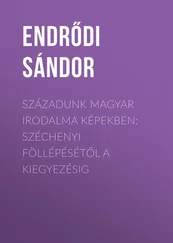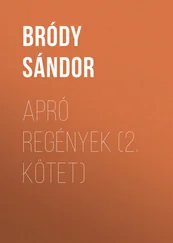She herself wanted to call, she says. She wanted to ask if I had received the two photographs. I thought it was you, I want to say, but she does not permit me to respond. You know, she cuts in, sometimes he does not even come to mind. How did she recognize me in front of the school, remember me from more than twenty years before, I ask. It’s such so long a time as all that, she says. Do you really think it’s been such a long time? Really, when you stood there, by the memorial column, it all started over again. What do you mean by ‘all’? I ask. Well, that I really ought to know everything; that’s why I sent the two pictures, on the off-chance. What off-chance? I ask. So why did you not even add a sender’s name on the envelope? She has no answer to that, and I also run out of things to say. I listen to the silence. Neither of us wanted to spell out what we were actually talking about; perhaps it’s precisely on that account that it is clear to me what she may be thinking, and I sense that for her, too, it is clear what I am thinking. I have a few questions about the photographs, I finally say. Fine, that’s all right, she says, not mentioning that she ought to be accompanying her child to a special class, not mentioning that they are expecting guests. She just says, Half a mo’, while she checks her schedule.
We agree on a time.
Where, though?
I say.
Oh, there …

I arrive at the Andrássy Hotel a quarter of an hour before the time we have agreed.
I walked across the City Park along roughly the path I took with Vera.
It is not December; there is no Aréna Road. It is late winter, and it is now named György Dózsa Avenue.
In my imagination I chalk a circle on the pavement of the corner of Mihály Munkácsy Street and Délibáb Street. That is where Soproni lay in my bloodied windcheater. Since we were able to return to the Red Cross home, I had slipped out with the supervisor, who had given me to understand that now it was all right for me to wear the ankle-length duffel coat, and he showed me where the two bullets had hit Soproni. I wonder if they had been taken out.
What had been the Red Cross home during the war is now the five-star Andrássy Hotel. On the façade I can make out only a few minor alterations; even the entrance is where it used to be. There was a time when the door that opened on to the hall was not a glass door. On the right is the reception; to the left a passage to the dining-room and coffee room.
Györgyi cannot imagine why I suggested we meet here. I shall not tell her straight away; I want to watch her face as she comes to discover the hotel’s past.
A young man at reception greets me. I have to disclose why I wish to look about upstairs.
Which newspaper are you from?
He does not wait for an answer but introduces himself and tells me, without being asked, what his duties are, how long he has been working at the hotel; he asks that in my report, that is what he calls it, I should mention his name as it would assist him in his professional career, as he calls it.
The red carpet in the corridors is held down with brass rods. The wallpaper is cream-coloured. Hanging on the wall are reproductions of Impressionist paintings. I go up to the second floor with the young man courteously coming with me. The doors are where they used to be. I come to a stop at the second door to the left of the stairs. In response to a request from me the young man hurries off downstairs to fetch a door key. Fortunately it is not booked, he says; trade is only moderate, but by Christmas it will, with luck, be full.
Ash furniture. On the double bed is an azure silk coverlet; the curtains are cream-coloured with a pattern of a colour similar to that of the coverlet.
On the wall is a reproduction of a Klee painting. The Playground . I say, one of his most interesting arabesque traceries. The young man’s expression changes. I think it’s from the late twenties, he says. I take photographs, sir, and I also draw, although I’m probably not talented enough as I was not accepted for art school, but I’ll try again next year.
There was a time when I happened to be staying here. I tell him. I’m not a newspaper reporter, I’m not writing an article, so I can’t write your name in anything, I’m sorry to say. That’s no matter, sir, I’m glad to hear that you stayed here. Klee is extraordinary, isn’t he? I think you share that view; there are times when he leads me to make connections where I seem to identify something which lies beyond the picture.
I tell him that I have an old document which carries a signature, the lettering of which resembles the squiggles of arabesques that can be seen in the print.
Would that be some kind of work card?
I tell him that it is a forged identification document which was produced in this very room during the war. The stamp was brought out from a hiding place under the parquet flooring here, and this was where somebody wrote in a name that was not the real name … and that lettering was like the arabesques …
The houses opposite and the front gardens are as they were. The roadway is clear. I try to make out the spot where I stood in the column as it was about to set off.
On 18 December 1944 the ICRC moves the occupants of the Jewish boy’s orphanage into the empty rooms. An agreement is reached with the commander of the 1st Battalion 13th Regiment Military Police that it will provide defence if that becomes necessary.
I was left alone in the room. My companion wanted to leave me to myself. I go down into the coffee room, draw up notes and order a Cabinet brandy.
I wait twenty minutes. A waitress then approaches me to ask what my name is; there is a telephone call for me at reception.
It’s a madhouse here, says Györgyi. I’m dreadfully sorry, but one hour ago I was told that I would have to replace a colleague who has fallen sick and should have been on a study tour with one of the classes. The train leaves this evening for Germany, so right at the moment I don’t know whether I’m coming or going, and I am packing right now. They knew that I have a valid passport. Madhouse, or what? I shall get in touch as soon as we arrive.
I order a coffee and ask the waitress if she could bring me a few sheets of writing paper. The request comes as a surprise, but she is accommodating. She comes back after a long delay, apologizing that she had to go up to the office to fetch the paper.
Above, on the second floor, is the former room from the window of which I would be able to see the section of the road where Vera lines up with Edo and Judy.
I write down that on one of the two photographs Györgyi sent me two sixteen-year-old girls are standing in the gate of a two-storey villa with a front garden. Each has an arm around the other’s waist. One of them is fair-haired, slim, long-faced, freckled and is smiling; the other is dark, the hair shoulder-length, the face oval and with a serious expression. They are not familiar to me, but the house is — I don’t know how, but I have a feeling that I once went there. It has big balconies and large corner windows, a wrought-iron garden gate, a house gate most likely of brown oak, with a glittering brass door handle clearly visible. There is a kennel in the front garden with an enormous watchful retriever.
The dog is my handhold.
For several weeks during the summer of 1944 I used to visit this house to play the accordion. Five minutes from number 74 Amerikai Road, the second building along from Erzsébet Királyné Road also in the XIVth District. That is where I learned ‘Tango Bolero’, which I had also played for Vera.
The message of the photograph is a renewed attempt by Györgyi to try to rescue something from a fading time. This opens the way for me to recall deeply buried memories, because recognition of the house located the two girls in front of the garden gate to the tram stop at the corner. A number 67 is approaching from Róna Street. I am coming from Amerikai Road, the two girls from the opposite direction. The number 67 has already set off from the stop at Uzsoki Street, and we take our places. I always get on by the back platform, they get on by the front platform, and we travel to St Domonkos Street, get off together at the church, me trailing behind and marvelling at them. I am thirteen; they are around sixteen. I enter the gates of the Boys’ Gymnasium building as they proceed further to the Abonyi Street entrance of Girls’ Gymnasium.
Читать дальше



